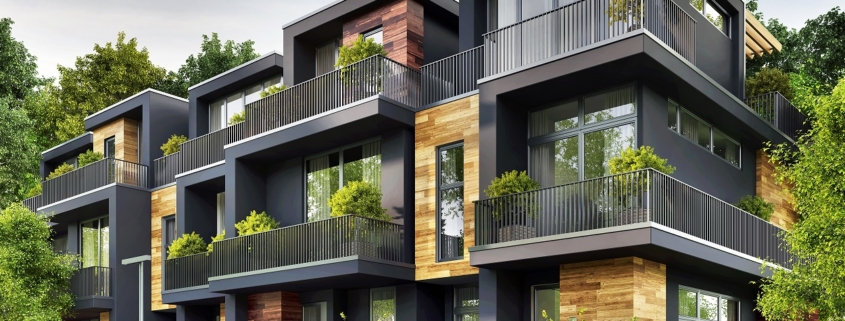What are the 2023 updates to Form 8908?
What are the 2023 updates to Form 8908?
Form 8908 is the document eligible contractors use to claim the Section 45L tax credit. This IRS credit incentivizes homebuilders and developers to construct energy-efficient residential properties. Continuing to leverage this credit provides substantial tax benefits and actively contributes to promoting sustainable and eco-friendly housing options.
The Inflation Reduction Act of 2022 extended this established energy-efficient home credit to cover qualified new energy-efficient homes sold or leased after 2021 and before 2033. It also increased and modified the credit for certain homes sold or leased after 2022. Eligibility has also been extended to include buildings that are more than three stories tall.
This has resulted in an expansion to Form 8809, which now provides taxpayers with a place to calculate all credits, including those projects placed into service prior to 2023 and new projects that are placed into service this year.
Changes in Section 45L amounts
This year marks a change in the amount of credit eligible contractors can request for their work. Previously, the Section 45L tax credit provided up to a $2,000 credit for new energy-efficient systems and installations sold or leased through December 31, 2022. As of January 1, 2023, that amount now varies from $500 to $5,000 per unit.
The credit amount primarily depends on two new factors stricter energy efficiency rules and the use of prevailing wage labor. Including these two factors maximizes the available credit amount.
Form 8809 now includes two sections, which allow contractors to separate their projects based on the calendar year – essentially, before January 1, 2023 and after December 31, 2022 – due to the above eligibility requirements:
- Line 1 calculates the credit on each home sold or leased before 2023 that meets the 50% energy-efficient standard. This allowable credit remains at $2,000.
- Line 2 calculates the credit for each manufactured home sold or leased before 2023 that meets the 30% energy-efficient standard. This allowable credit remains at $1,000.
Line 3 provides a credit of $2,500 for each home sold or leased after 2022 that is eligible to participate in Energy Star programs. These homes qualify through one of three options:
- Participation in an Energy Star Residential New Construction Program that meets the Single-Family Home Requirements but is not certified as a Zero Energy Ready Home
- Participation in an Energy Star Manufactured New Homes Program that meets the Single-Family Home Requirements but is not certified as a Zero Energy Ready Home
- Participation in an Energy Star Multi-Family New Construction Program that meets the prevailing wage requirements and the Multi-Family Home Requirements but is not certified as a Zero Energy Ready Home.
The largest credit available is covered in Line 4, which provides a $5,000 credit for each home sold or leased after 2022 and meets one of the following Energy Star participation programs:
- Energy Star Residential New Construction Program and is certified as a Zero Energy Ready Home
- Energy Star Manufactured New Homes Program and is certified as a Zero Energy Ready Home
- Energy Star Multi-Family New Construction Program that meets the prevailing wage requirements and is certified as a Zero Energy Ready Home
Reduced credits are available for multi-family projects that do not have Zero Energy Ready home certification or are not completed using prevailing wage. Line 5 is for those projects and calculates a $500 credit for each home sold or leased after 2022.
Likewise, Line 6 calculates the credit for homes sold or leased after 2022 that are eligible to participate in the Energy Star Multi-Family New Construction Program and are certified as a Zero Energy Ready Home but do not meet the prevailing wage requirements. The credit for these projects is $1,000.
Important claim windows remain the same
What hasn’t changed? The fact that the Section 45L tax credit can still be claimed retroactively for all residential and multi-family projects completed within open tax years, which is typically the three to four most prior years. Additionally, any unused Section 45L credits can be carried forward for 20 years.
As experts in §45L deductions, Walker Reid can advise our clients on IRS compliance for this deduction. Failure to properly file Form 8809 or take an unqualified deduction can result in IRS penalties and tax repayment. At Walker Reid, we prioritize maximizing client incentives while strictly adhering to IRS requirements and definitions. If you have any questions or concerns about the changes in Form 8809, contact us today to schedule a call.
About the Author:
David Diaz is a partner at Walker Reid Strategies, a licensed professional engineering firm specializing in performing §179D studies and §45L certifications. Mr. Diaz is an expert in energy efficiency and specialty tax services who shares his insights at www.walkerreid.com and online through webinars. For more information, contact him at ddiaz@walkerreid.com.




